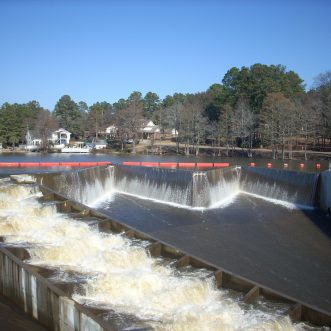The Water Resources Development Act (WRDA) of 2020 was introduced as H.R. 7575 on July 13, 2020, sent to the House of Representatives on July 15 for a vote, and passed on July 29. The legislation authorizes locally driven design and construction for projects developed in cooperation with the U.S. Army Corps of Engineers (Army Corps). These projects directly benefit our ports, harbors, inland waterways, and the overall resiliency of our communities, with particular attention to port infrastructure expansion and restoration, inland waterway restoration, lock and dam restoration and construction, flood protection, and ecosystem restoration. Such measures will be integral in spurring economic growth, creating jobs, and creating access and empowerment for often overlooked rural and disadvantaged communities.

Because maintaining and improving our water resources infrastructure is critical to our nation’s economy and our communities, WRDA 2020 is Congress’ fourth bipartisan WRDA (2014, 2016, 2018, and 2020) in an effort to provide support to our water resources infrastructure. Building upon past WRDAs, the WRDA 2020 specifically authorizes the following projects and related studies:
- Construction of 34 pending water infrastructure projects that were part of the 2018 WRDA;
- Completion of 35 feasibility studies for water resource development projects originally identified in the 2014 WRDA;
- Expedited completion of 41 ongoing feasibility studies;
- Direction for the Army Corps to conduct river basin studies in the Great Lakes, Upper Mississippi River, Lower Mississippi River, Lower Missouri River Basin and the Sacramento River; and
- Dedication of Federal resources for the construction of inland waterways, including the Upper Ohio River navigation system and the Navigation and Ecosystem Sustainability Program for the Upper Mississippi River.
The economies most impacted by this funding include those in the public sector, manufacturing, and mining.

WRDA 2020, as with past WRDA authorizations, also aims to protect rural and urban communities by funding studies, design, and construction for projects that specifically address repetitive flooding and increase resiliency in response to climatological changes and sea level rise.
There are ports and waterways throughout our nation that must be dredged on a regular basis to ensure safe passage of ships, barges, etc. Beneficially reusing the clean dredge materials on projects close to or adjacent to our waterways makes good economic sense and can produce subsequent environmental and community benefits. Continued Congressional support for water resource projects that promote the beneficial reuse of sediment is also included. WRDA 2020 establishes a national policy focused on the economic and environmental value of using clean dredge material for ecosystem restoration projects or storm damage reduction projects.

In addition, the 2020 WRDA unlocks the $10-billion-dollar balance of the Harbor Maintenance Trust Fund that was developed in 2019 as a mechanism to provide funding for harbor maintenance needed for U.S. ports to expand, increase capacity, and improve related intermodal and transportation infrastructure.
If you have any questions about the WRDA 2020, please contact our corporate Public Sector Market Group Lead, Tim Murphy (419-214-4406 or tmurphy@cecinc.com), or Patrick Cummings (888-267-7891 x3416 or pcummings@cecinc.com).

Post a Comment